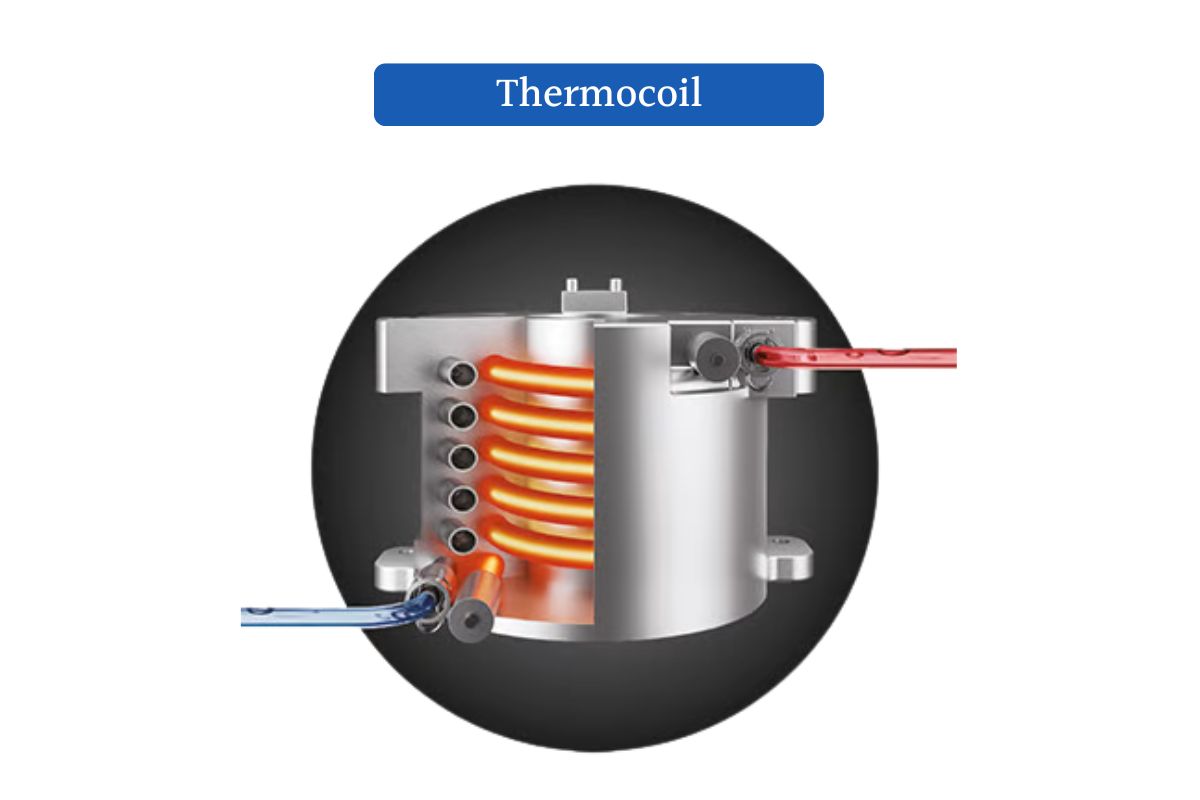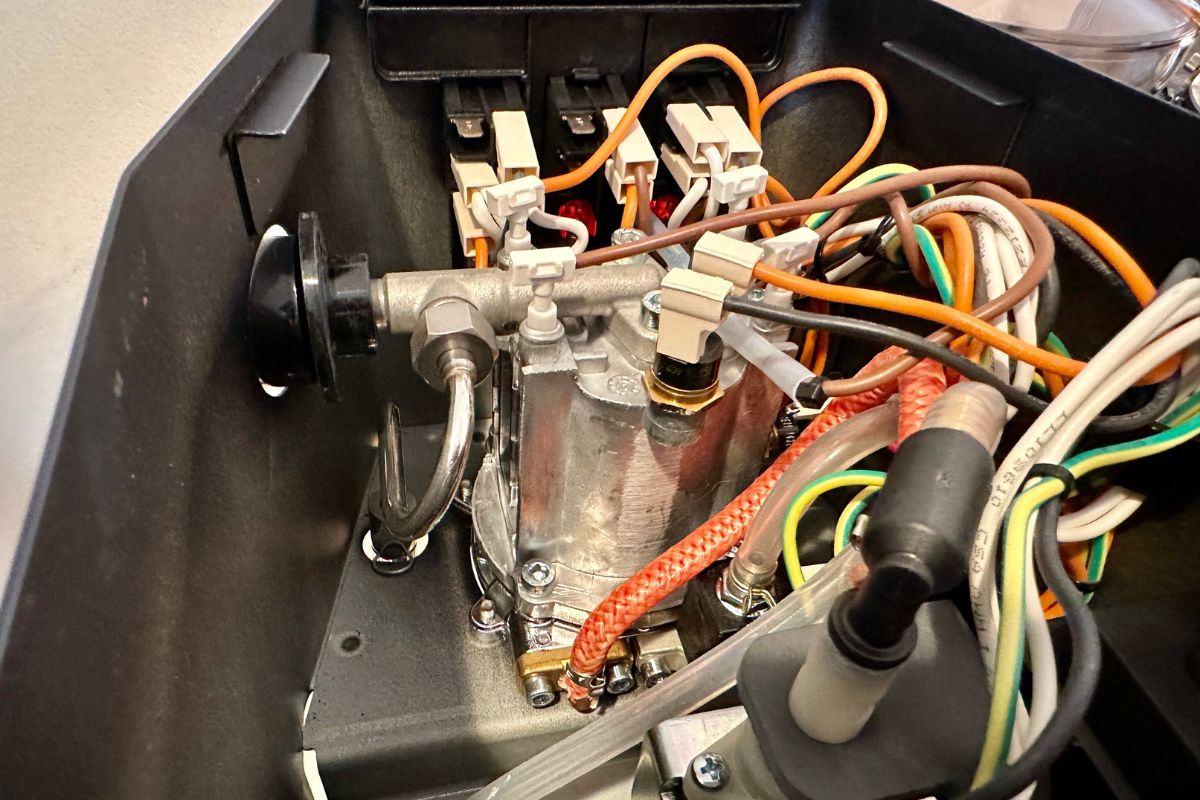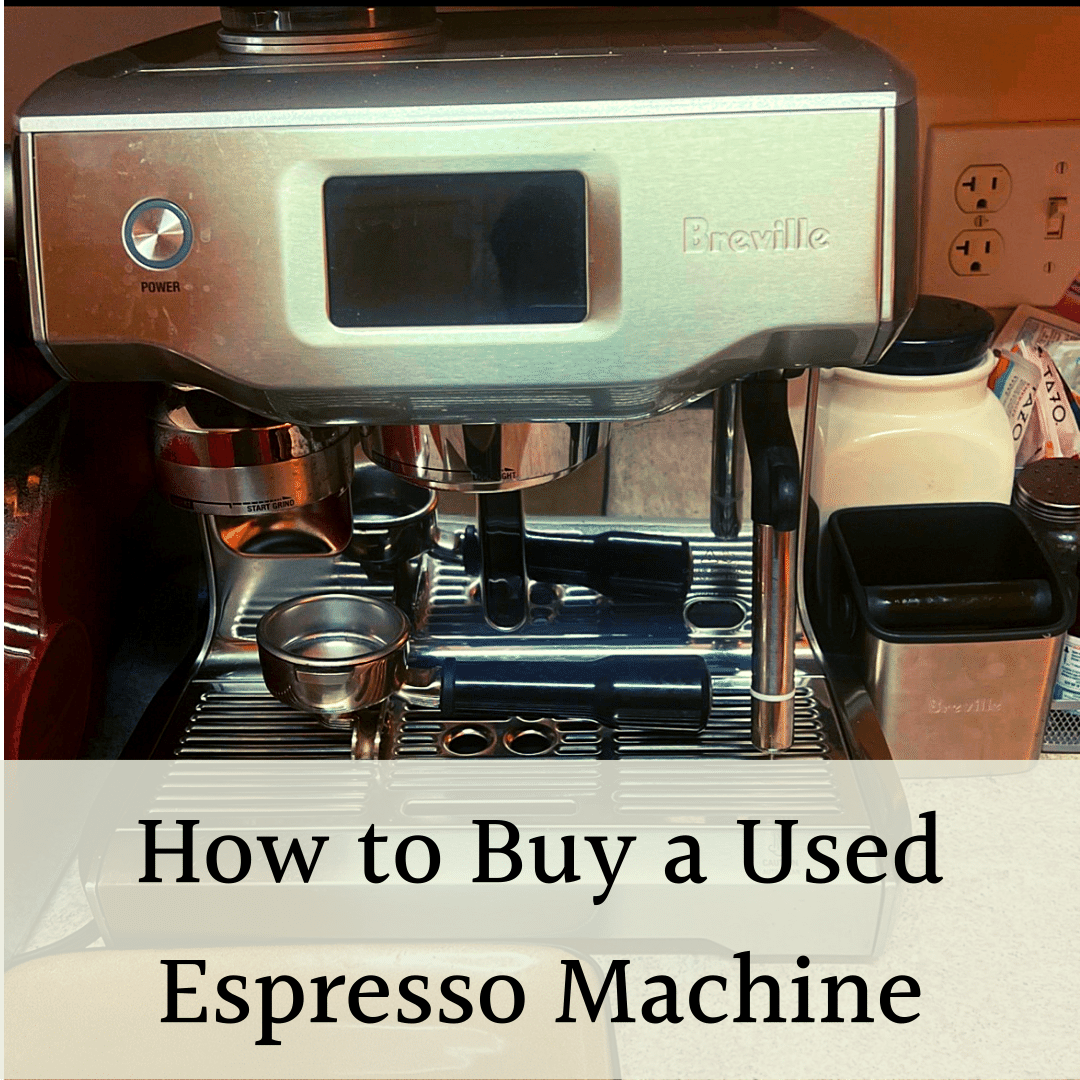Water temperature is one of the most important variables in espresso. Different espresso machines have different heating systems to achieve proper temperature. Between thermoblock vs. thermocoil vs. boiler systems, which does it best?
A boiler system will have better temperature control, especially a dual dual boiler. Boilers have better temperature stability due to their size, which leads to better espresso. However, thermoblocks and thermocoils are faster, smaller, less expensive, and have improved in quality recently.
But why do these different systems excel in different areas? I’ll break down how each system works, and I’ll also outline some considerations to make when choosing your next espresso machine and heating system.
Thermoblock Heating System
A thermoblock heating system is a block of metal that heats water as the water flows through the block. This block is typically made of aluminum or stainless steel. It contains a series of channels through which water circulates. Electric heating elements surround these passages, heating the metal block and the water.
These systems are both compact and inexpensive to manufacture, which is why they’re often found on many budget-friendly home espresso machines. They also heat water quickly because the metal block retains and transfers heat very efficiently.
The volume of the heated block is also much higher than the volume of the water running through the block. That leaves a lot of energy available at all times to transfer to the water.
However, thermoblock systems are imprecise in their temperature control. Imagine holding a piece of metal over an open flame and moving it closer or further from the flame to control the temperature. That’s essentially what a thermoblock is doing. So, you can imagine how tough it is to get an accurate, to-the-degree setting.
These heating systems are also prone to scale buildup. The water channels are very narrow, so even a little buildup can lead to blockages. Thermoblocks are also prone to leaking since they are made of multiple metal pieces welded together. That leaves many potential points of failure.
Thermocoil Heating System

A thermocoil is a close cousin of the thermoblock. The principle of the two is the same. Water is heated as it flows through a metal channel attached to an electrically powered heating unit. The main difference is thermocoils are one continuous metal pipe, while thermoblocks are multiple pieces of metal.
The pipe is arranged in a coil pattern (thus the name) and is usually made of copper. Copper is an efficient temperature conductor. This means thermocoils can heat water even quicker than thermoblocks. The singular pipe in a thermocoil is less prone to leaking than the soldered joints of thermoblocks.
However, thermocoils struggle with some of the same pitfalls as the thermoblock. Water temperature is imprecise and can fluctuate between uses. The narrow piping is also prone to scaling and buildup. Water treatment is a must to maintain a thermocoil’s longevity.
Note: many thermocoil espresso machines come with Proportional-Integral-Derivative (PID) controllers. This adds another layer of temperature stability, improving espresso quality. Breville has advanced thermocoils in new models like the Barista Pro and Touch.
Boiler Heating System

A boiler system heats water in a reservoir to a given temperature. Water is heated all at once, while thermoblocks and thermocoils heat water as it flows through the coil.
Said differently, thermoblocks and thermocoils are like pouring room-temperature water through a red-hot pipe. Boiler systems are like putting the whole pot of water on the stove.
Heating a larger volume of water takes a lot of energy, so boiler systems are slow to heat up. However, once they reach the target water temperature, they are more precise heating systems.
Large volumes of water retain heat better than a small stream; therefore, boilers have much better temperature stability than thermoblocks. Additionally, these systems use a Pressurestat or a PID system to measure the temperature of the water.
The precision and control that boilers provide means they are more expensive heating systems. These are found on almost every higher-end home and commercial espresso machines.
Single-boiler versus Dual boiler
Boiler machines come in two broad categories: single-boiler and double-boiler. The extra heating system is dedicated to steaming, improving temperature stability and convenience.
As the name implies, a single-boiler has one boiler, while a dual-boiler has two. Single-boiler espresso machines supply water for both brewing and steaming. The water temperature has to change between pulling an espresso shot and steaming milk, which leads to two issues:
- Temperature instability between changes
- Time lost during changes
It can take over a minute for the boiler temperature to change from brewing to steaming. Also, If you steam milk first, the water needs to cool to make espresso. You’ll get a bitter shot if you brew right after steaming, and I always recommend brewing espresso first, then steaming milk.
Dual-boiler espresso machines add a second heating element dedicated to steaming. You’ll always have a stable temperature, and you can brew and steam simultaneously. However, the double boiler heating system makes the espresso machines more expensive and larger.

Note: there are dual thermoblock machines with dedicated heating systems for steaming and brewing as well. The DeLonghi La Specialista Prestigio has this feature, which reduces the wait time when switching modes.
Thermoblock vs. Thermocoil vs. Boiler
Here’s a score of each heating system across multiple factors. Each category is ranked on a 1-5 scale with 1 being low.
| Thermoblock | Thermocoil | Boiler | Dual Boiler | |
|---|---|---|---|---|
| Temperature Stability | ✔️ | ✔️✔️ | ✔️✔️✔️✔️ | ✔️✔️✔️✔️✔️ |
| Speed | ✔️✔️✔️ | ✔️✔️✔️✔️ | ✔️ | ✔️✔️ |
| Cost | ✔️✔️✔️✔️✔️ | ✔️✔️✔️✔️ | ✔️✔️✔️ | ✔️ |
| Maintenance and durability | ✔️ | ✔️✔️ | ✔️✔️✔️✔️ | ✔️✔️✔️✔️ |
Speed and Temperature Control
Temperature stability is the most important factor here, and I’d debated doubling the score for this category in the table.
You can see there’s a tradeoff between speed and cost versus temperature stability.
Thermoblock and thermocoil are quick to heat but have inconsistent temperature control. Thermocoils outperform thermoblocks, but not by much.
Meanwhile, boilers are slow but provide much better temperature precision and consistency. You can be confident in a boiler heater’s ability to maintain a consistent temperature.
Maintenance and Durability
Thermoblocks are the least durable system of the three. The many pieces soldered together to create a water channel create a lot of potential failure points. Leaking is a common problem, and scaling and buildup in the narrow channels have to be constantly counteracted.
Thermocoils are protected against leaking but are still prone to scaling and buildup. The water flows through a single-piece pipe, so there isn’t a weak joint or meeting point where water could leak out. That pipe is still narrow, so regular descaling has to be done to maintain a healthy machine.
Boilers are quite durable with proper maintenance. There is no easy point of failure to cause leaking. Scaling is a more minor issue, as it only applies to the short piping leading from the boiler to the group head and steam wand.
However, electrical systems (like the PID) can be expensive to fix if something goes wrong (which goes for any espresso machine).
What About a Heat Exchanger System?
A heat exchanger is another heating element on espresso machines that works like a thermocoil inside a boiler to create two distinct water temperatures for brewing and steaming.
A heat exchanger works by running a second metal tube through the main boiler. The main boiler heats water for steam, while the second tube is temperature-controlled for brewing espresso. Sometimes, that water is mixed with cooler water to ensure it’s appropriate for brewing. Like I said, it’s like putting a thermocoil inside a regular single-boiler.
This system allows you to both brew and steam at the same time. That’s a major improvement over machines with one boiler. However, it’s cheaper than double-boiler machines since it only uses one heating element. This makes it a nice middle ground between functionality and affordability.
However, it sacrifices temperature consistency. Single-boiler machines typically have precise control over brewing temperature. This isn’t true for heat exchangers. The boiler is heated to provide water for steaming, not brewing. The brewing temperature is controlled by absorbing heat from the steam boiler and mixing hot water with cool water if necessary. In this regard, it’s more like a thermocoil than a boiler.
The heat exchanger allows the espresso machine to do everything, even if it doesn’t do it all well. You can steam and brew simultaneously, but the boiler takes a while to heat up. It’s cheaper than a double-boiler machine, but you don’t get the precision most boiler systems provide.
Choosing the Right Heating System
When deciding which heating system is right for you, consider the following factors:
1. Espresso Quality: If you strictly prioritize espresso quality, a boiler will give you better shots. Their superior temperature stability provides more consistent flavors than thermocoils and thermoblocks.
2. Budget: while we all want fantastic espresso, thermoblock and thermocoil systems are the most affordable. Heat exchangers are more expensive, and boiler systems (especially double-boilers) are at the top of the price bracket.
3. Space: A compact thermoblock or thermocoil system might be more suitable if you have limited counter space. Double-boiler machines require a larger footprint because of the two separate heating systems.
4. Milk-Based Drinks: a dual-boiler or heat exchanger system is great for lattes, cappuccinos, and other milk-based drinks. Simultaneous brew and steam make brewing several lattes back to back especially easy.
Pulling Back the Curtain On Espresso Machine Functioning
Much more goes into the best heating system, including PID, material, element size, and general engineering. Heating elements are one element of an espresso machine, and this article is just an overview to understand the terms you’ll see.
Read our espresso machine guide to learn all the ins and outs of how an espresso machine works, including the heating element.




